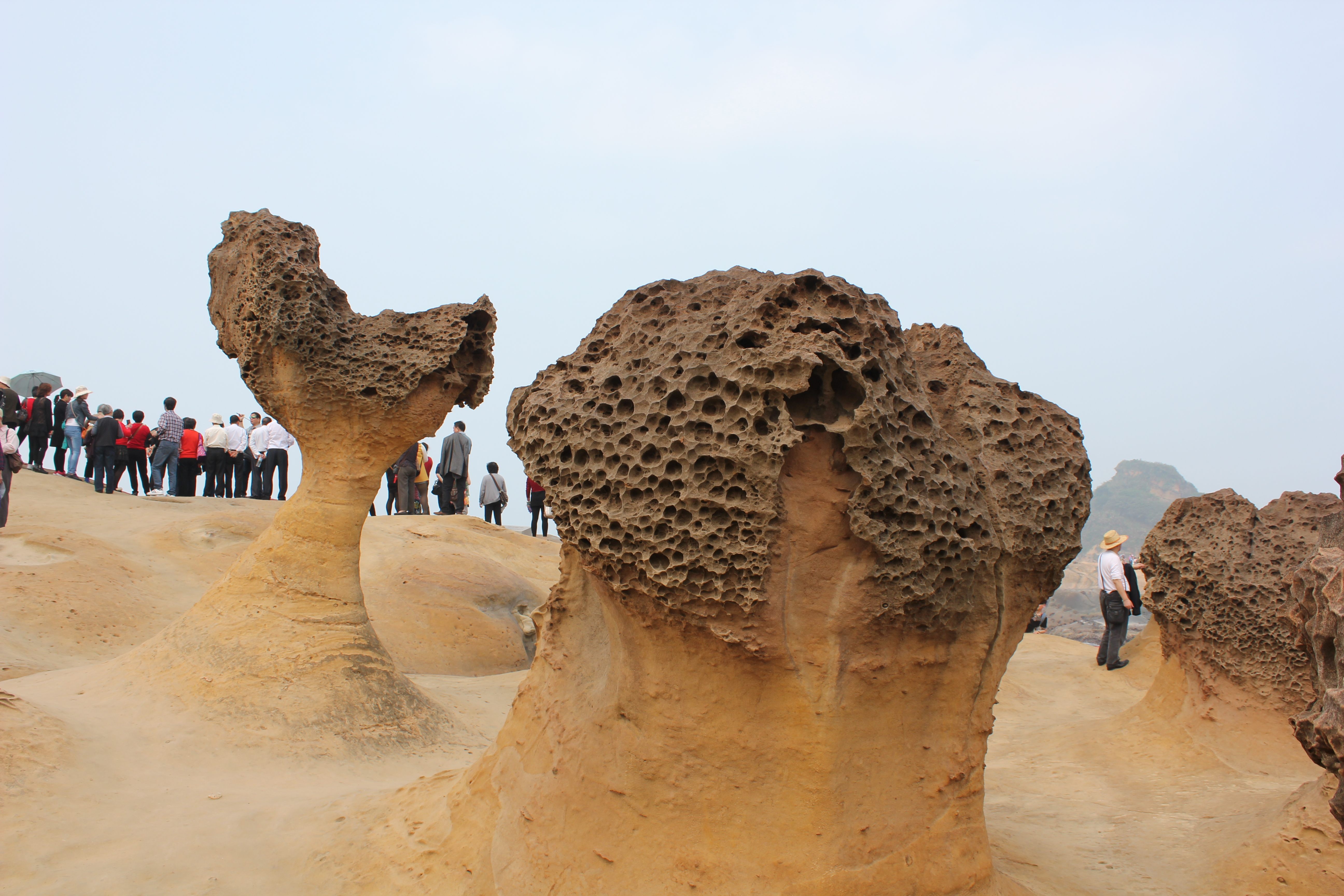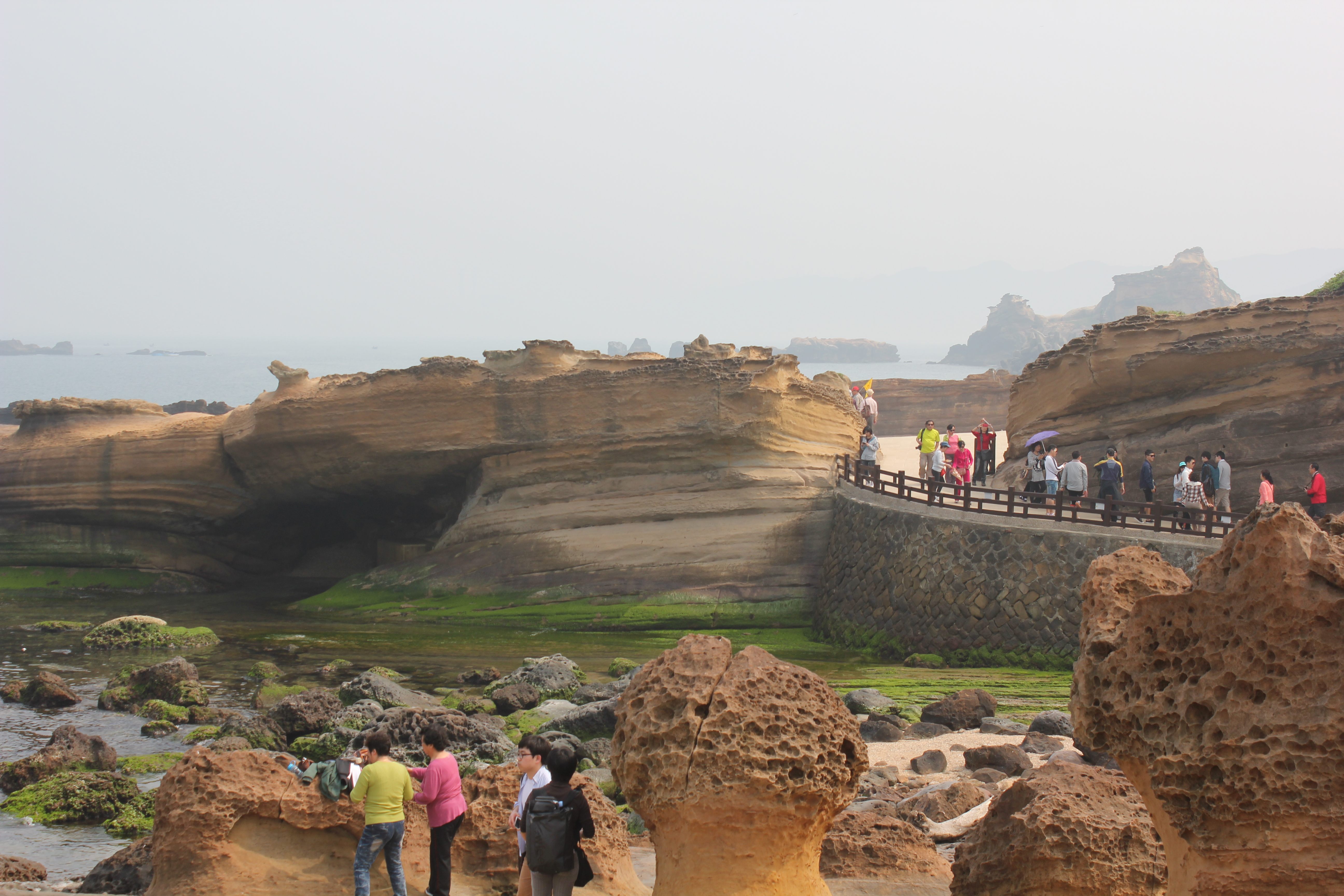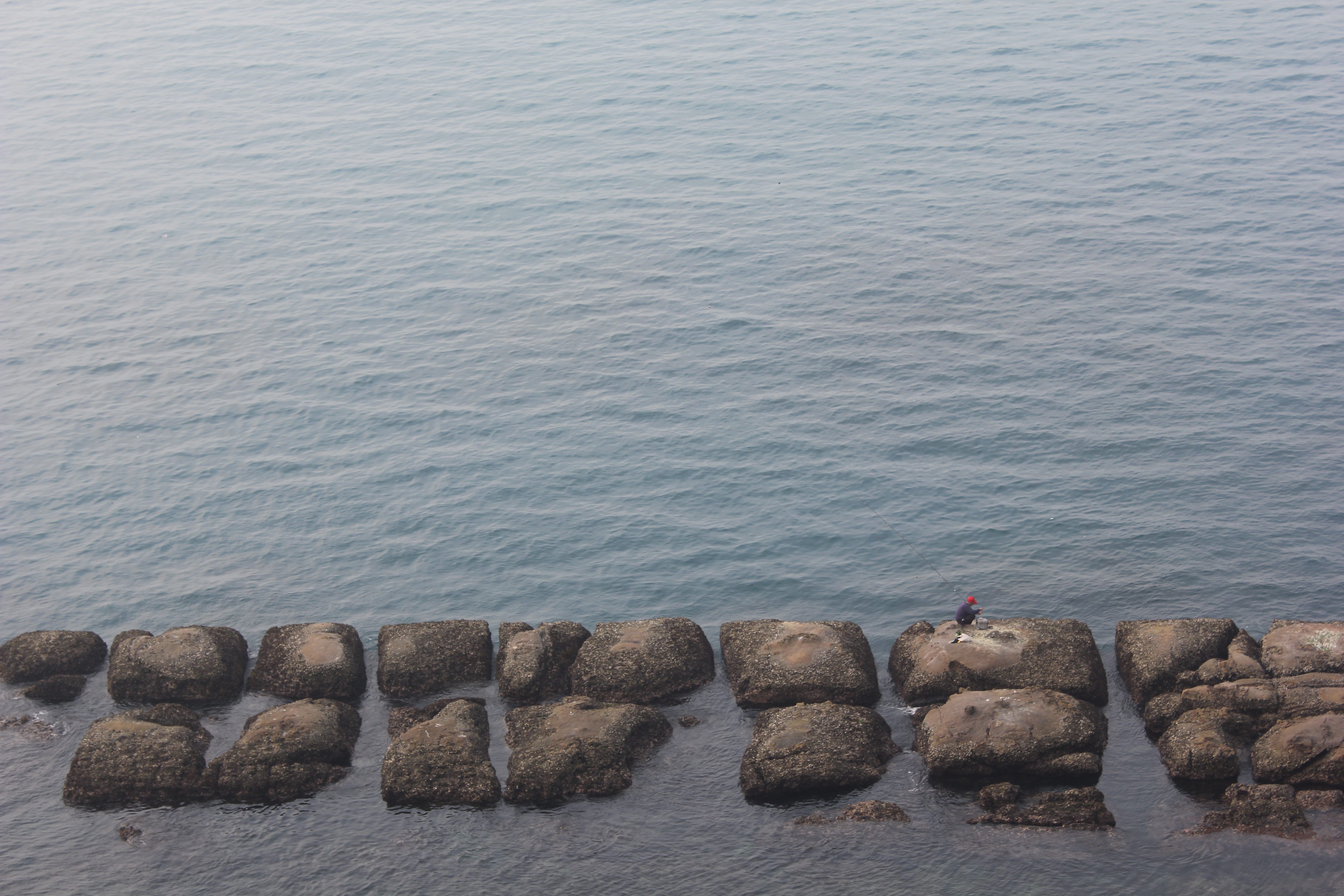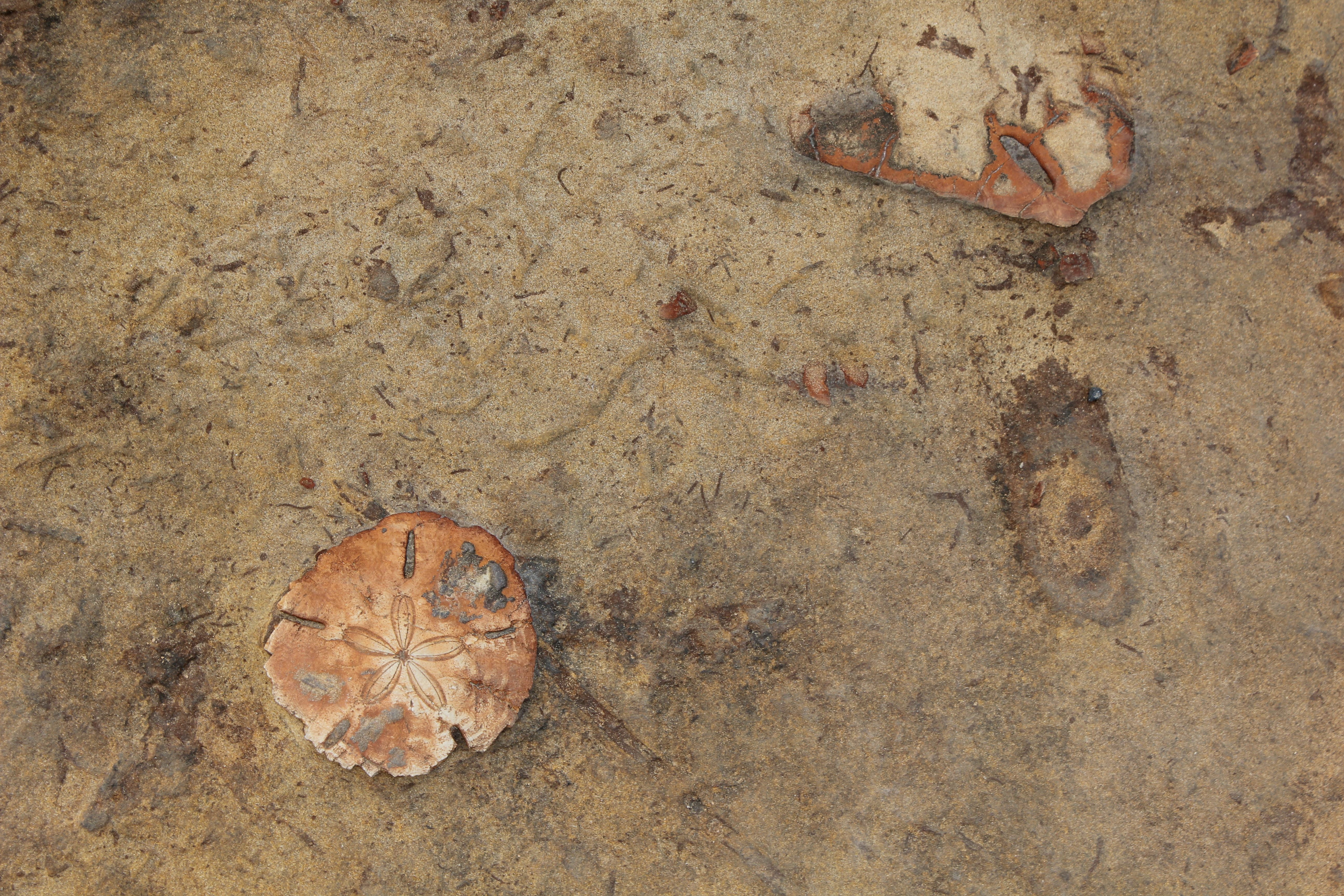Taiwan’s Yehliu And The Debate Over Geotourism

Yehlui Geological Park (All photos: Giulia Pines)
Yehlui Geological Park is a misty oasis, a sprawling moonscape of pockmarked rock towers. You can climb over crevasses and in between cliffs, with the delicate outlines of fossilized sand dollars underfoot. A little over an hour by bus from Taipei, the whole place is just a spit of land jutting out of the northeast coast of Taiwan.
But over this tranquil scene, superimpose the image of hundreds of Chinese and Taiwanese tour groups, all clamoring to nab a spot in front of the most impressive rock formations. This is the other experience of the park.
It also represents one of the biggest debates in geology today: At what point do you risk destroying a place in order to save it?

For most of the last century, Yehliu stood as a military fortress closed to the public. “It wasn’t until 1962, when the famous Taiwanese photographer Huang Tse-Hsiu took pictures of Yehliu’s natural landscape, that it was introduced to the world,” explains the manager of Yehliu’s Planning Department, Mu-Hsiang Hsieh.
The site is something of a geological anomaly: Its otherworldly atmosphere seems to exist outside of time, yet it owes its existence, in the most literal way possible, to time’s effects. Its so-called “mushroom rocks” are towers of pockmarked, honeycombed stone, most of them eroded over centuries, their large, tufty heads standing on spindly bases barely strong enough to hold them. Indeed, some of them are in danger of breaking, like the famous “Queen’s Head,” who appears rather regal, almost Nefertitian from her perch overlooking the sea, her long neck arching into a crown.

Tourists clamber for a spot in front of her, and must wait in line, aided by several diligent guards stationed around the park, making sure no foot strays over the somewhat garish pink lines that have been drawn across certain sections of the terrain, no amateur photographer gets too ambitious.
Many Taiwanese think of Yehliu fondly, the way Americans think of Disneyland: as a place they went many years ago with their parents but haven’t been back to since.To a geologist, however, Yehliu is a perfect example of the dilemma faced by today’s geotourism industry: parks like these must make money to pay for their upkeep, yet making money can really only mean one thing: bringing in the hoards of tourists whose stomping feet may only hasten its demise. The fragility of some of the rocks, coupled with the attractiveness they pose to eager climbers and picture-posers, means that the park not only posts warning signs and 20 different park patrols at strategic locations, it also adopts crowd-control measures in the high seasons, requiring groups to register in advance. Still, it’s a toss-up as to whether the most damage will come from visitors or the weather itself.
“The truth of the matter is in the real world, the short term economic incentives [of tourism] are almost always stronger than the conservation incentives,” lamented Jonathan Tourtellot, Geotourism Editor, National Geographic Traveler, in a phone conversation about the hazards and benefits of geotourism as he prepared to catch a flight from Washington, DC to Patagonia. “This is a big problem worldwide with any type of tourism dealing with a delicate destination.” As his National Geographic article “UNESCO’s Geoparks “Clarify” Geotourism” put it, “Done wrong, mass tourism [can ruin] places, but done right, tourism could help protect a destination from irresponsible development, exploitation, and other pressures.”

For that 2011 article, Tourtellot had happened to be reporting from an international congress in Arouca, a town in Northern Portugal with its own fossil-filled geological park where a consensus was reached—first, on what the term “geotourism” even meant, and second, on how its mission could be met. The Arouca Declaration on geotourism that resulted from this congress was meant to be the first step in clarifying when those millions of stomping feet were actually helping to sustain a region, and when they were crossing a line. “Geological tourism,” it read, “is a basic tool for the conservation, dissemination and cherishing of the history of Life on Earth.” Arouca, of course, was just one of the locations that could benefit from such a declaration, but the struggle between tourism and environmental conservation is playing out worldwide, in renowned spots like the Grand Canyon, the Galapagos, and countless others.
Those who work at the Yehliu Nature Center, founded in November 2012, would essentially agree. Their mission involves attracting a healthy mixture of laymen and academics—joining those who merely appreciate the landscape with those who have the tools to document its erosion over time. The mission, explained Hsieh, is to “allow the public to make good use of local resources, explore and experience nature in a happy learning environment, and attain a sustainable lifestyle through sharing.”
“With the aim of monitoring the changes in the rocks, the Park has entrusted academic groups to assist in rock monitoring, using a 3D scanner to record the size and shape of every rock to study the degree of weathering,” explained Hsieh. “The Park has also invited academics to research and develop protective methods to delay the weathering of the rocks.” If the bet pays off, this geological destination will be charging those who visit the park with the task of saving it.























Follow us on Twitter to get the latest on the world's hidden wonders.
Like us on Facebook to get the latest on the world's hidden wonders.
Follow us on Twitter Like us on Facebook